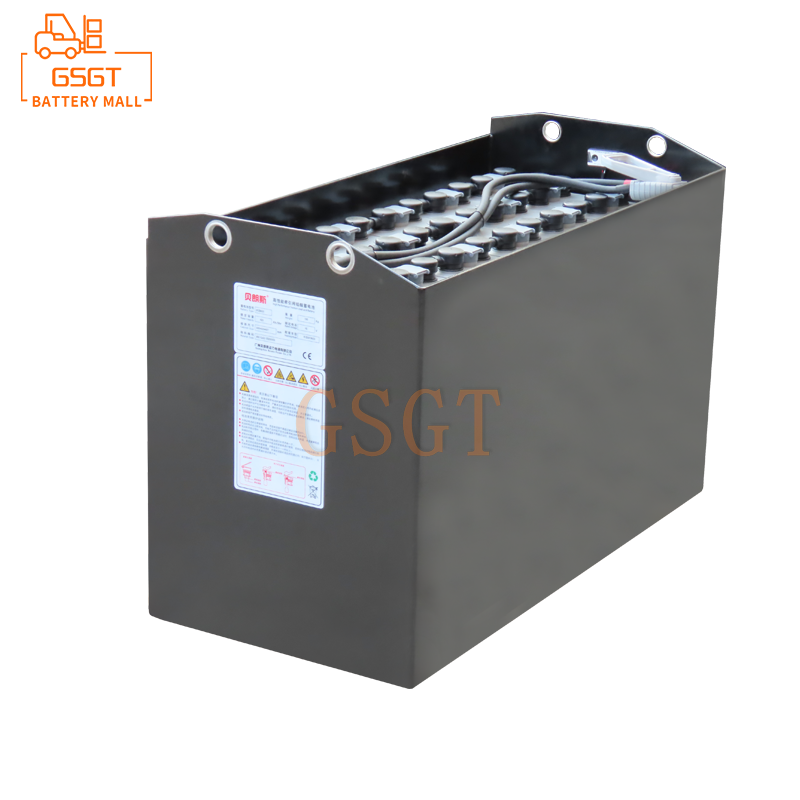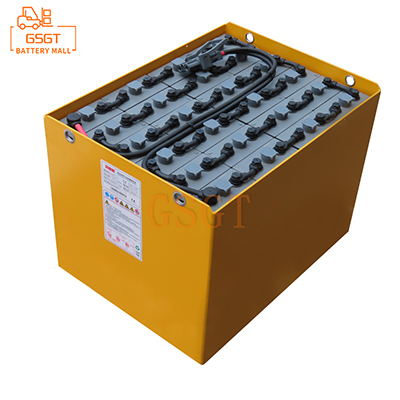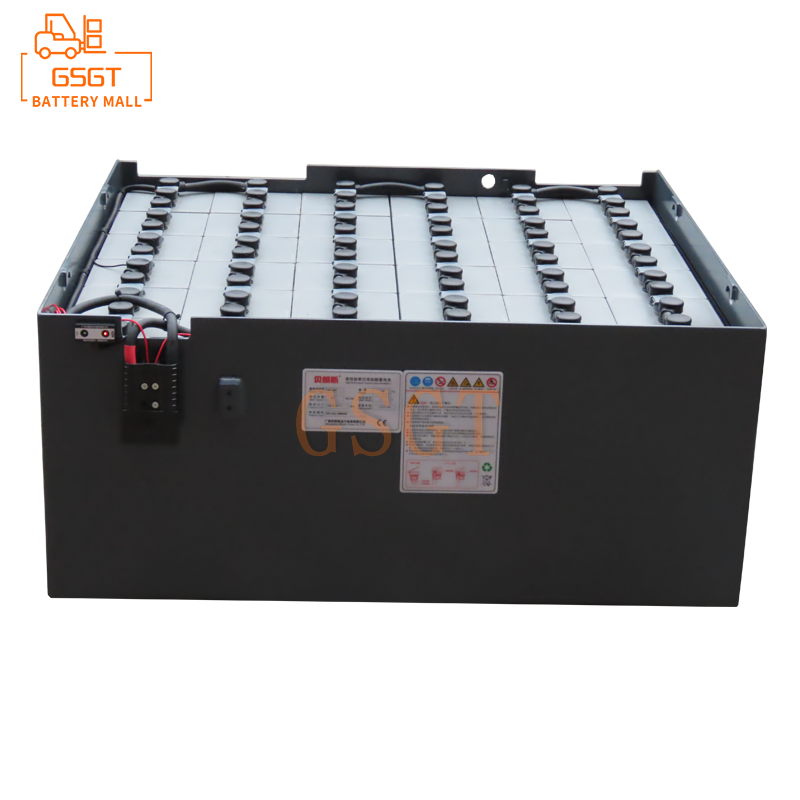Time:2025-04-09 10:00:48
Browse:667
In the field of industrial logistics, forklift as a key handling equipment, its power source is crucial. Lead-acid battery occupies an important position in forklift power system by virtue of its advantages of low cost, mature technology and high rate discharge performance. However, if used improperly, it will not only affect the normal operation of the forklift, but also greatly shorten the service life of the battery and increase operating costs. The following details 6 key operational details in the use of forklift lead-acid batteries.
1. Accurate grasp of charging timing
When to charge the forklift lead-acid battery is the first critical detail. Forklift lead-acid battery in the process of use, its power will gradually consume. In general, when the power drops to 30%-40% of the rated capacity, it should be charged. Premature charging will make the chemical reaction inside the battery inadequate, long-term so will reduce the battery capacity; Too late charging, excessive battery discharge, the plate is easy to vulcanize, greatly shortening the battery life.
In actual operation, the power can be monitored in real time by the power display device on the instrument panel of the forklift. Some advanced forklifts are also equipped with an intelligent power management system that alerts the operator when the power level approaches a set charging threshold. In addition, the operator can also roughly estimate the power consumption based on the working time and task intensity of the forklift. For example, forklifts operate under heavy load and frequent start and stop conditions, and the power consumption is faster, and it is necessary to pay close attention to the power.
2. Scientific choice of charging method
At present, the main charging methods of forklift lead-acid batteries are constant voltage charging, constant current charging and pulse charging. Different charging methods have their advantages and disadvantages, and should be scientifically selected according to the actual situation.
The constant voltage charging method is simple, the charging equipment cost is low, and it can be quickly charged with a large current in the early charging period. As the battery voltage rises, the charging current gradually decreases until it is full. However, it is easy to cause overcharge or undercharge of the battery, which has a certain impact on the battery life, and is suitable for scenarios where the charging accuracy is not high and emergency charging is required.
Constant current charging can keep the charging current constant, can effectively avoid overcharging, less damage to the battery, and can better ensure the consistency and service life of the battery. However, the charging time is long, and the charging device is relatively complex and the cost is high, which is suitable for situations where the battery life is high and there is sufficient charging time.
In recent years, the application of pulse charging has gradually increased. It can effectively eliminate battery polarization, improve charging efficiency and extend battery life through intermittent pulse current charging. This method has high technical requirements for charging equipment, but it can make up for the shortage of constant voltage and constant current charging to a certain extent, especially for high-performance and high-value forklift lead-acid batteries.
In actual operation, enterprises should choose the most appropriate charging method according to the frequency of use of forklifts, working environment and the specific type of batteries. For example, for forklifts with high frequency of use in indoor environments such as warehouses, pulse charging can be selected to ensure battery performance and service life; For forklifts with low frequency of use in temporary sites and other environments, constant voltage charging may be more appropriate.
3.The key points of electrolyte maintenance
The electrolyte of lead-acid battery is prepared by sulfuric acid and distilled water in a certain proportion, and the condition of the electrolyte directly affects the performance of the battery. In daily use, the level and density of the electrolyte should be checked regularly.
The liquid level is checked through the liquid level observation hole on the battery case. Under normal circumstances, the liquid level should be kept between the upper and lower scales. If the liquid level is too low, the plate will be exposed to the air, resulting in plate vulcanization, reducing the battery capacity. At this point, distilled water should be added to replenish the liquid level. It should be noted that distilled water with high purity must be used, and water containing impurities such as tap water must not be replaced, otherwise impurities will chemically react with the electrolyte and damage the battery.
Electrolyte density is also an important indicator, which reflects the charging state of the battery. In general, a fully charged battery electrolyte has a density of 1.26-1.28 g/cm³ (25 ° C). The density meter can be used to measure the electrolyte density regularly. If the density is too low, it indicates that the battery is insufficient and needs to be charged in time. If the density is too high, it may be the electrolyte water loss or the concentration of sulfuric acid is too high, which will accelerate the corrosion of the battery plate, and the density can be adjusted by adding an appropriate amount of distilled water. In addition, in different seasons, due to temperature changes, the electrolyte density will also fluctuate, and the electrolyte density can be appropriately increased in winter to enhance the low-temperature performance of the battery.
4. Strict control of the depth of discharge
The depth of discharge refers to the percentage of the amount of electricity released by the battery in the course of use to its rated capacity. The discharge depth of lead-acid battery of forklift has significant influence on its life. In general, the cycle life of lead-acid batteries is inversely proportional to the depth of discharge, and the deeper the depth of discharge, the shorter the cycle life of the battery.
In actual use, excessive discharge of lead-acid batteries should be avoided as far as possible. For example, it is more appropriate to control the discharge depth within 80%. When the forklift has a power drop, the driving speed is significantly slower, and the lifting of goods is difficult, it is likely that the battery discharge depth is close to the limit, and the operation should be stopped immediately and charged. Excessive discharge will cause excessive consumption of active substances on the battery plate, resulting in irreversible vulcanization of the plate, seriously damaging the battery performance and life.
In order to effectively control the depth of discharge, enterprises can develop forklift operation specifications, requiring operators to pay close attention to the working status of forklifts, to avoid long-term, high-intensity operation resulting in excessive battery discharge. At the same time, the discharge depth monitoring device can also be installed to grasp the discharge situation of the battery in real time, and when the discharge depth is close to the set safety value, the alarm is issued in time to remind the operator.
5.The effective management of battery temperature
The temperature has double influence on the performance and life of lead-acid battery of forklift truck. In the appropriate temperature range (around 25 ° C), the chemical reaction of the battery can be carried out efficiently and stably, and the best performance can be played. However, when the temperature is too high or too low, it will have an adverse effect on the battery.
Under high temperature environment, the chemical reaction speed inside the battery is accelerated, the electrolyte evaporation is intensified, resulting in the battery water loss, the plate corrosion is accelerated, and the battery life is shortened. If the forklift operates continuously for a long time in a high temperature environment in summer, the battery temperature may rise sharply. In this case, you can take forced air cooling or water cooling measures, such as installing heat dissipation fans in the battery compartment of the forklift truck, or equipped with a special water cooling heat dissipation system to ensure that the battery temperature is maintained within a reasonable range.
Low temperatures can also harm battery performance. Low temperature will increase the viscosity of the electrolyte and slow down the ion diffusion rate, resulting in increased internal resistance of the battery and decreased charge-discharge performance. In cold areas or winter, the battery temperature can be increased and its performance can be improved by installing thermal insulation sleeves and preheating devices for the battery. For example, before the forklift is started, the electric heating device is used to preheat the battery, so that the battery temperature is raised to the appropriate range, and then the operation can effectively improve the starting performance and work efficiency of the forklift.
6.The importance of daily cleaning and inspection
To keep the forklift lead-acid battery clean and regular comprehensive inspection is an important guarantee to ensure its normal operation and extend the service life.
In terms of daily cleaning, dust, oil and electrolyte stains on the surface of the battery shell should be cleaned regularly. Excessive accumulation of dust and oil may affect the heat dissipation of the battery, and may lead to short circuit between battery poles. If the electrolyte stain is not cleaned up in time, it will corrode the battery shell and pole. When cleaning, use a clean damp cloth to gently wipe, avoid using corrosive detergent.
The inspection work covers many aspects. In addition to the electrolyte level and density check mentioned above, it is also necessary to check whether the battery pole is loose and oxidized. The loose pole will increase the contact resistance, affect the battery charging and discharging performance, and even cause fire in serious cases. Electrode oxidation forms a layer of oxide on the surface that impedes current conduction. If the pole is found to be loose, it should be tightened in time; For column oxidation, a special column cleaner can be used to clean and apply an appropriate amount of protective grease. In addition, it is also necessary to check whether the battery shell is damaged, leakage, etc. Once the problem is found, the battery should be replaced immediately to prevent environmental pollution and equipment damage caused by electrolyte leakage.
The correct use of forklift lead-acid batteries is related to the efficient operation of forklift trucks and the operating costs of enterprises. By accurately grasping the charging time, scientifically selecting the charging method, carefully maintaining the electrolyte, strictly controlling the depth of discharge, effectively managing the battery temperature, and carefully doing a good job of daily cleaning and inspection, the six key operational details can significantly improve the performance of the forklift lead-acid battery, extend its service life, and provide a solid guarantee for the smooth development of industrial logistics operations. In the actual operation process, enterprises should strengthen the training of operators, improve their attention to the details of battery use and operational skills, and at the same time, in combination with their own actual situation, develop a perfect battery use management system to ensure that the forklift lead-acid battery is always in the best working condition.

$2450

$3810

$3405

$4045

MESSAGE
Professional And Efficient
Security
Affordable Price
Professional Services